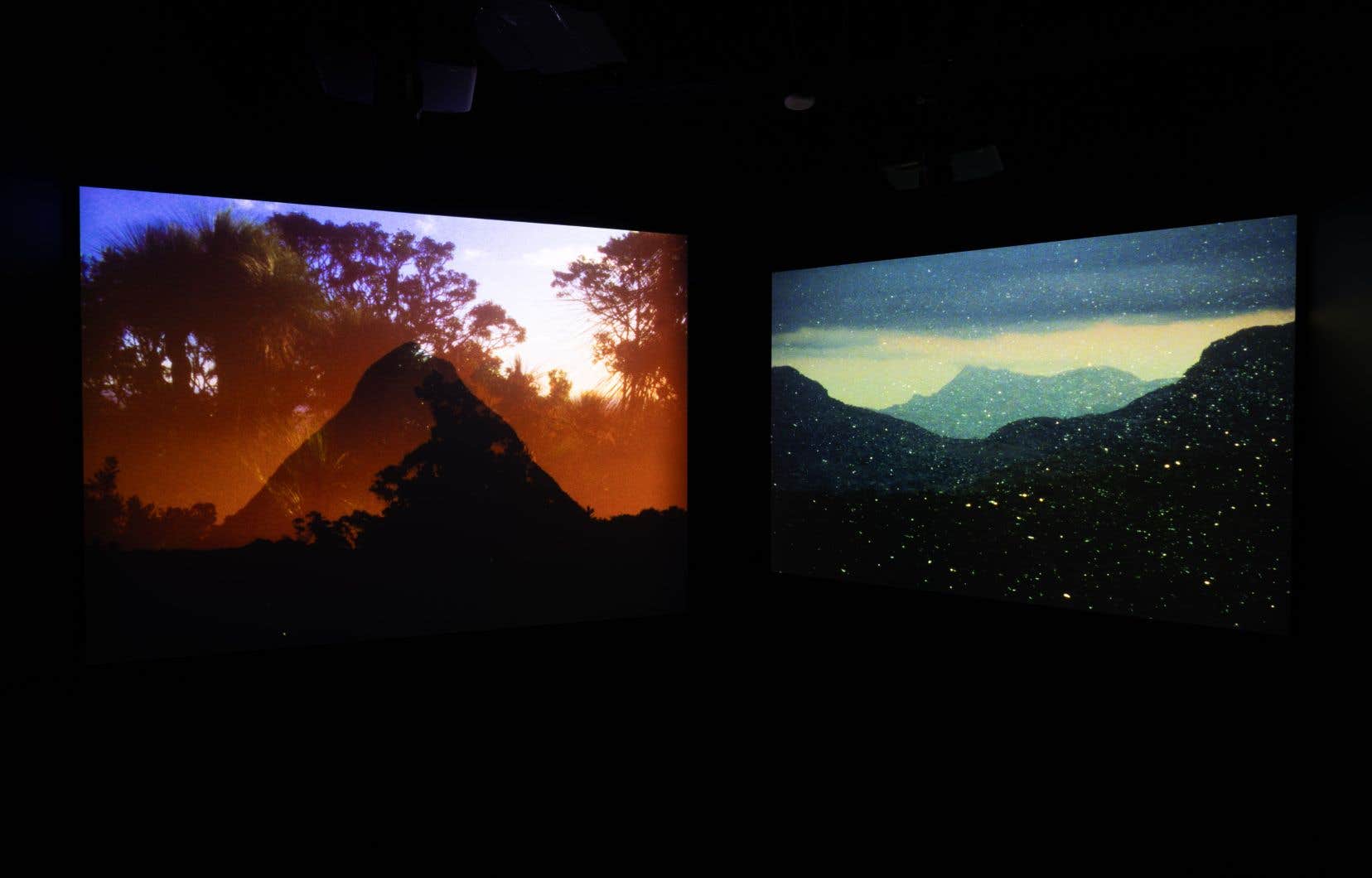The subject is tricky. Talking about questions of nature, territory and, subtext, ecosystems at a time when ecology has become the great challenge of an irresponsible, deaf and blind humanity is not an easy thing… That’s the type of engaged questioning which could very quickly fall into the presentation of illustrative and literal works where it is difficult to find the artistic part. Of course, we would like the artist to be the Savior, a new Messiah, or at least a guru, but there are still limits to what we can ask of creators and of art… Some you will say that art no longer really has its place in the face of the climate emergency, which, for thinkers like Bruno Latour, is a total and irreversible alteration of our relationship to nature and the world…
Despite the pitfalls linked to these questions and the proliferation of art exhibitions dealing with ecology, curator Marie-Ève Beaupré succeeded in bringing together nine women artists living in Quebec who, almost all, were able to create works of art and not just life lessons.
As Beaupré explains, “these great ambassadors of the visual and media arts communities share several points in common, including approaching their thoughts on different ecosystems from a horizontal perspective. Their works, each in its own way, are permeable to the relational fabric of nature and the life of non-humans. They transgress the productivist, extractivist or dominant conception of the relationship with the environment; they fertilize our relationship to the world with other epistemologies. Their research questions the complementarities and divisions that have constructed borders and cultures, as well as the way in which they have shaped our perception and our hierarchical representations of nature.
However, the works of these nine artists are not limited to an illustration of essential ideas on the links between nature and human beings…
Beaupré has managed to avoid the pitfalls inherent to this field of investigation by situating his reflection in an artistic, and even poetic, perspective. She explains that already “the title of the exhibition, women volcanoes forests torrents, reads like a short poem, like an incantation, like an evocation of the power of the work of artists in tune with the force of the natural elements summoned in their work. The curator also adds that “the title of the exhibition as well as the names of the artists are written – wherever possible – in lowercase in order to emphasize the absence of hierarchical relationships – of uppercase/lowercase relationships – between the elements. human and non-human living beings, in the works and sensitivity of artists.”
The tone is thus set. And this desire for art continues in the chosen works.
Works of art
Disturbing despite its simplicity — even stronger, in fact, thanks to the simplicity of its means — is the video installation Rock Piece (Ahuriri Edition) (Work of stones (bewildered version)) by visual artist and filmmaker Asinnajaq, whose experimental film we will remember Three thousand (2017). To very succinctly summarize this creation, judiciously purchased by the Hydro-Québec Collection, we can say that the viewer will see a stack of stones which gives birth to a woman, then, in a reverse movement of the video image, this no one will find themselves buried by these same stones… The video screen, judiciously placed very close to the ground, accentuates this feeling that human beings depend on the earth, that they were born from it and that they will return to it.
The digitized film Archipelago of Earthen Bones (An archipelago of terrestrial bones) by Malena Szlam shows volcanoes in a game of superimposed images accompanied by a heady sound, all giving the feeling of a rise towards a paroxysm which will never find resolution. A visually rich work which is like a challenge to our desire for a story (Story) which would conclude with a happy ending, as in Hollywood cinema.
In The sound of icebergsCaroline Gagné depicts the sounds produced by drifting icebergs as they crack… An idea that has haunted many artists – including Katie Paterson and Siobhán McDonald – but which finds a very strong form here.
We will also see the creations of Jacynthe Carrier, Nelly-Eve Rajotte, Sabrina Ratté, Maria Ezcurra, Anahita Norouzi and Sonia Robertson.
As Beaupré writes, “although art cannot resolve current ecological issues, these works offer us opportunities to restore our attention, to compensate for our lack of sensitivity and knowledge with regard to the diverse world of life “.
We must also highlight how the works presented were created by so-called “local” artists, which, in the context of a dominant contemporary art market which thrives on the circulation of works in the four corners of the planet, is already a very intelligent bias.
